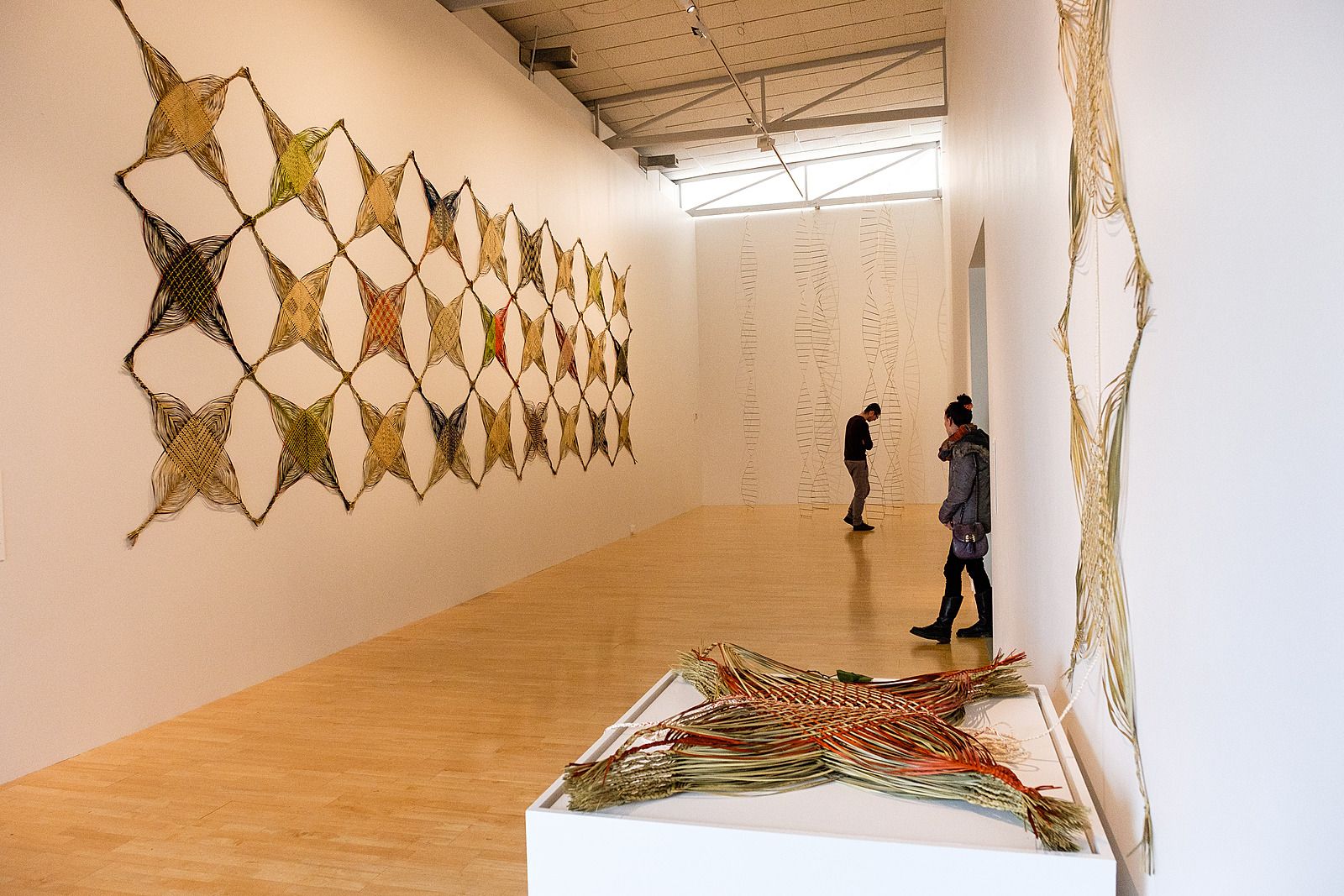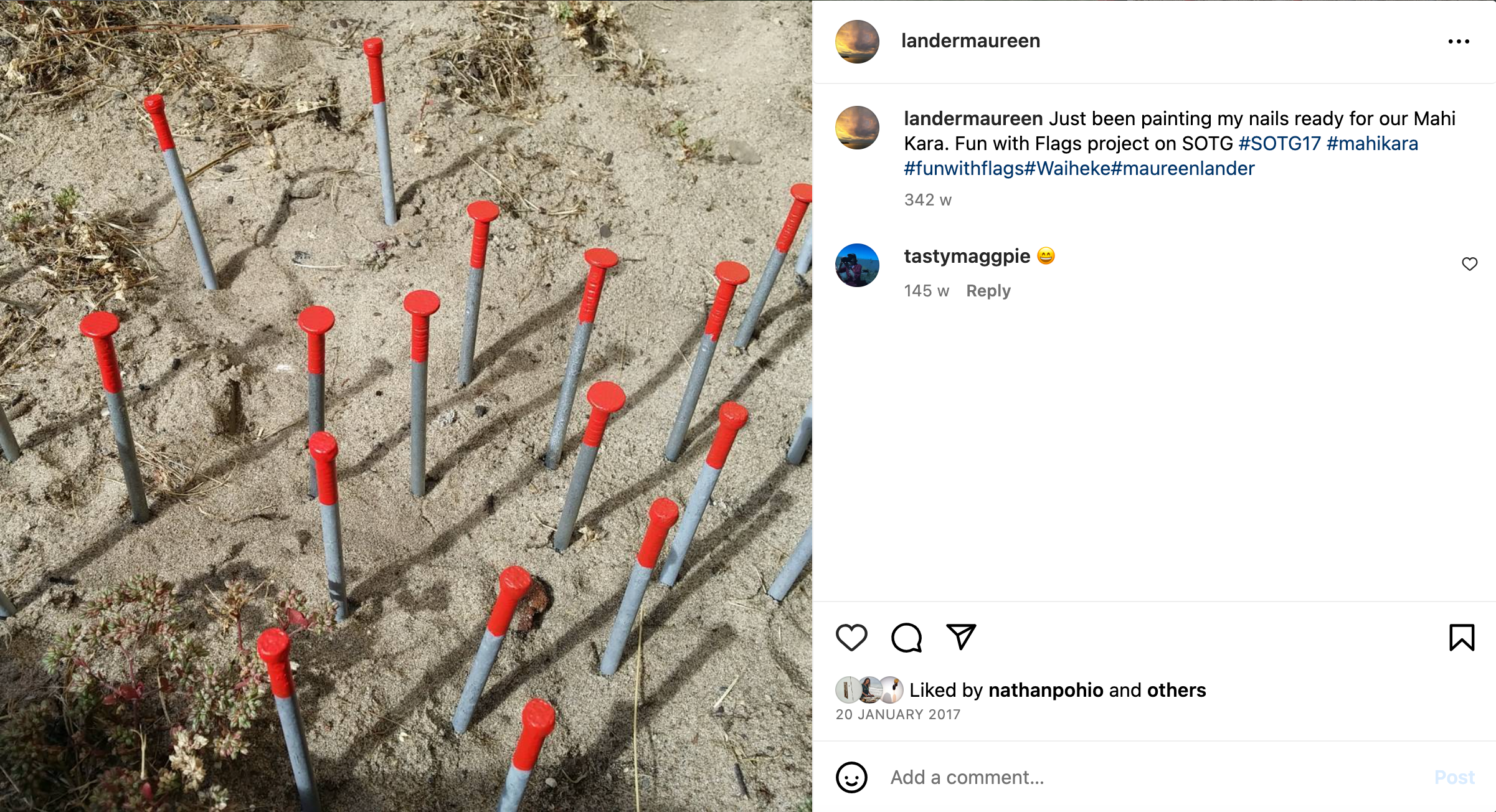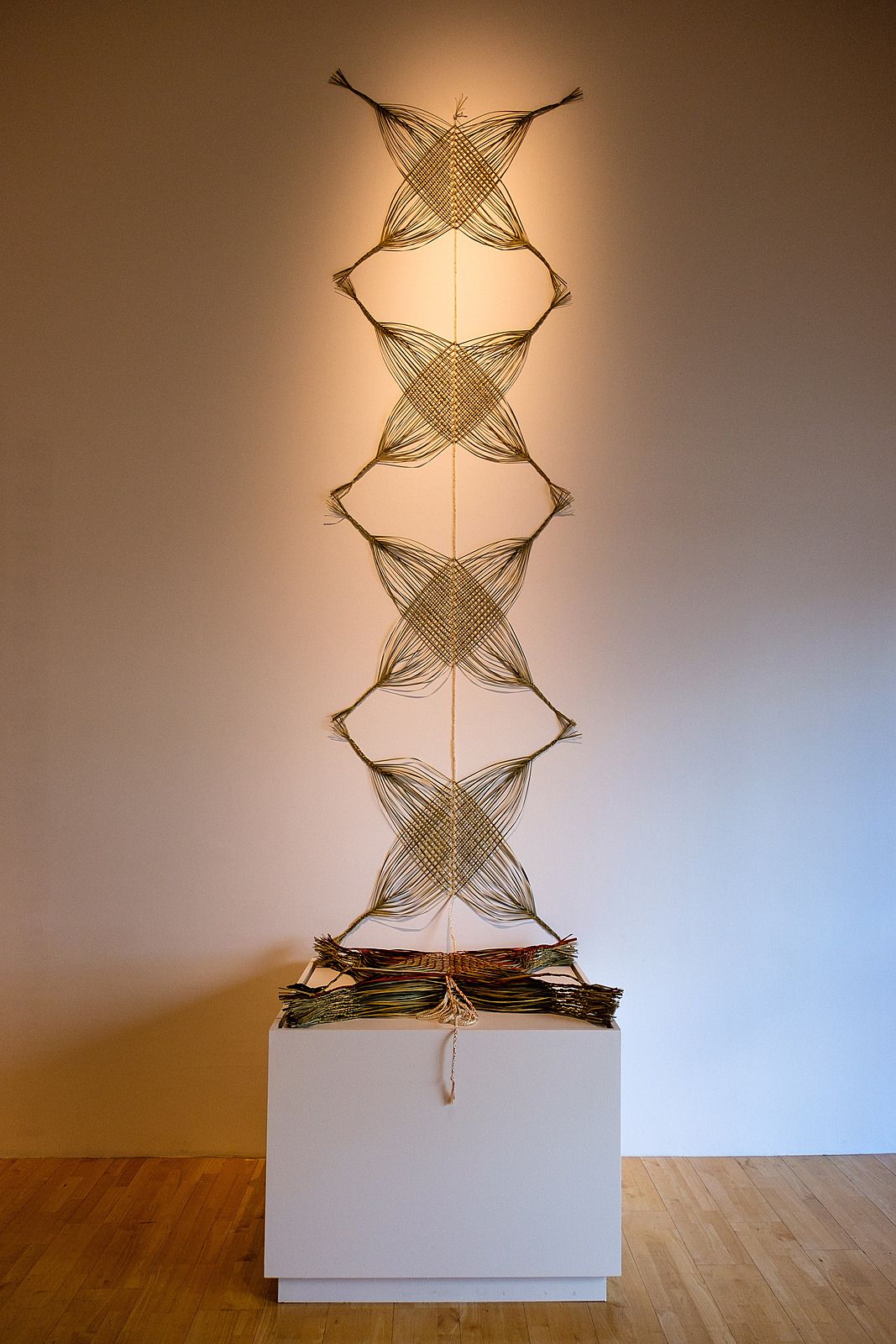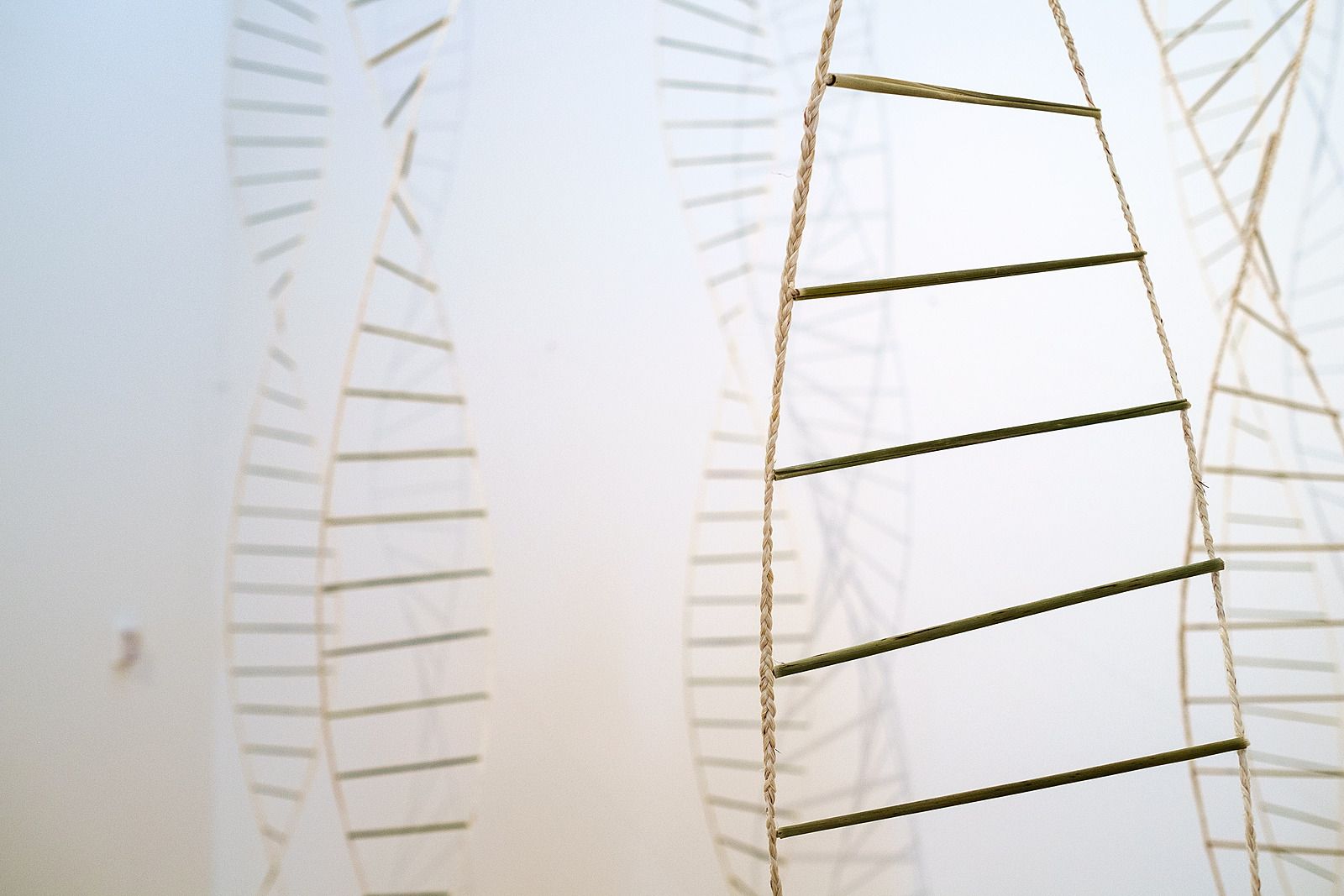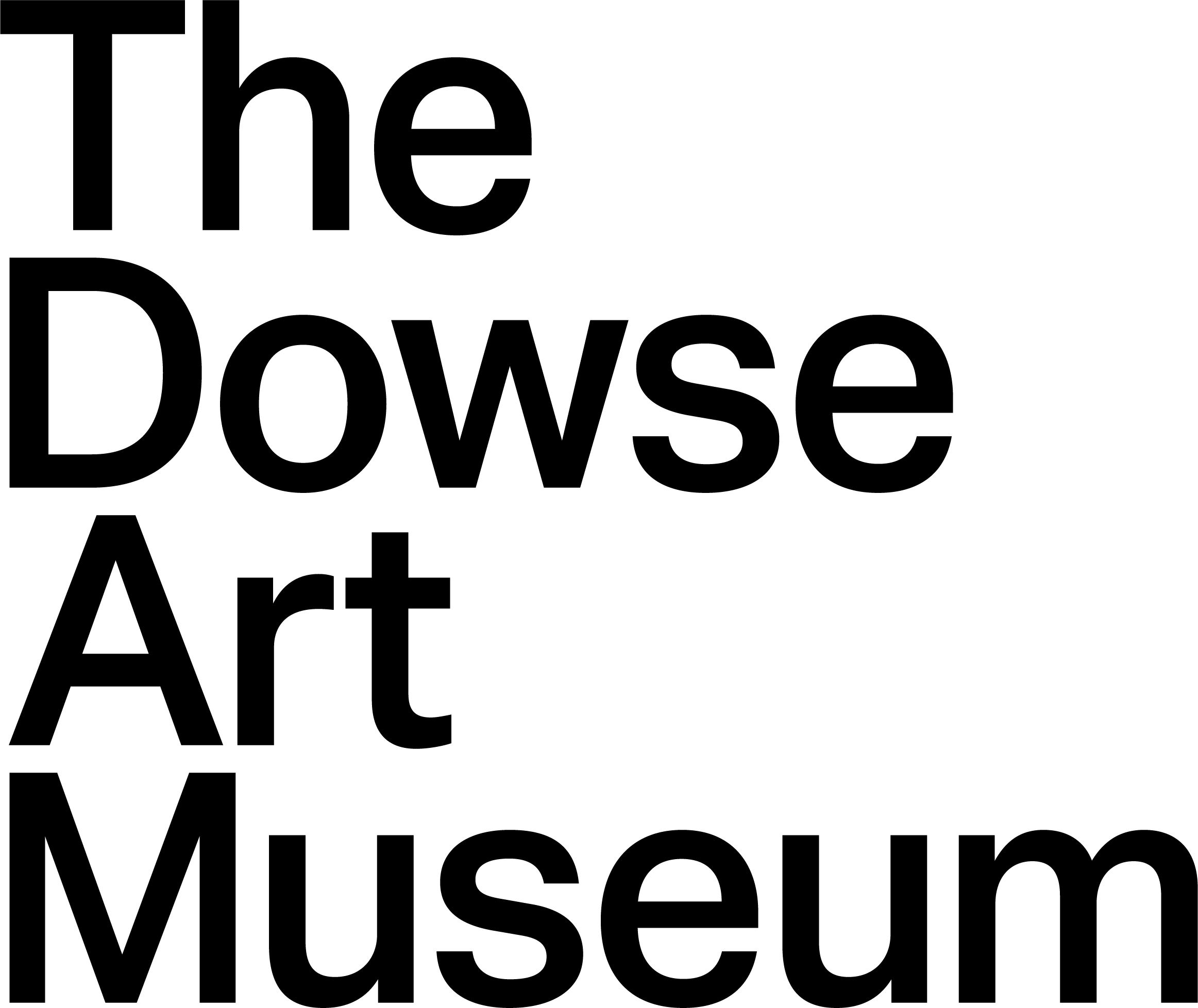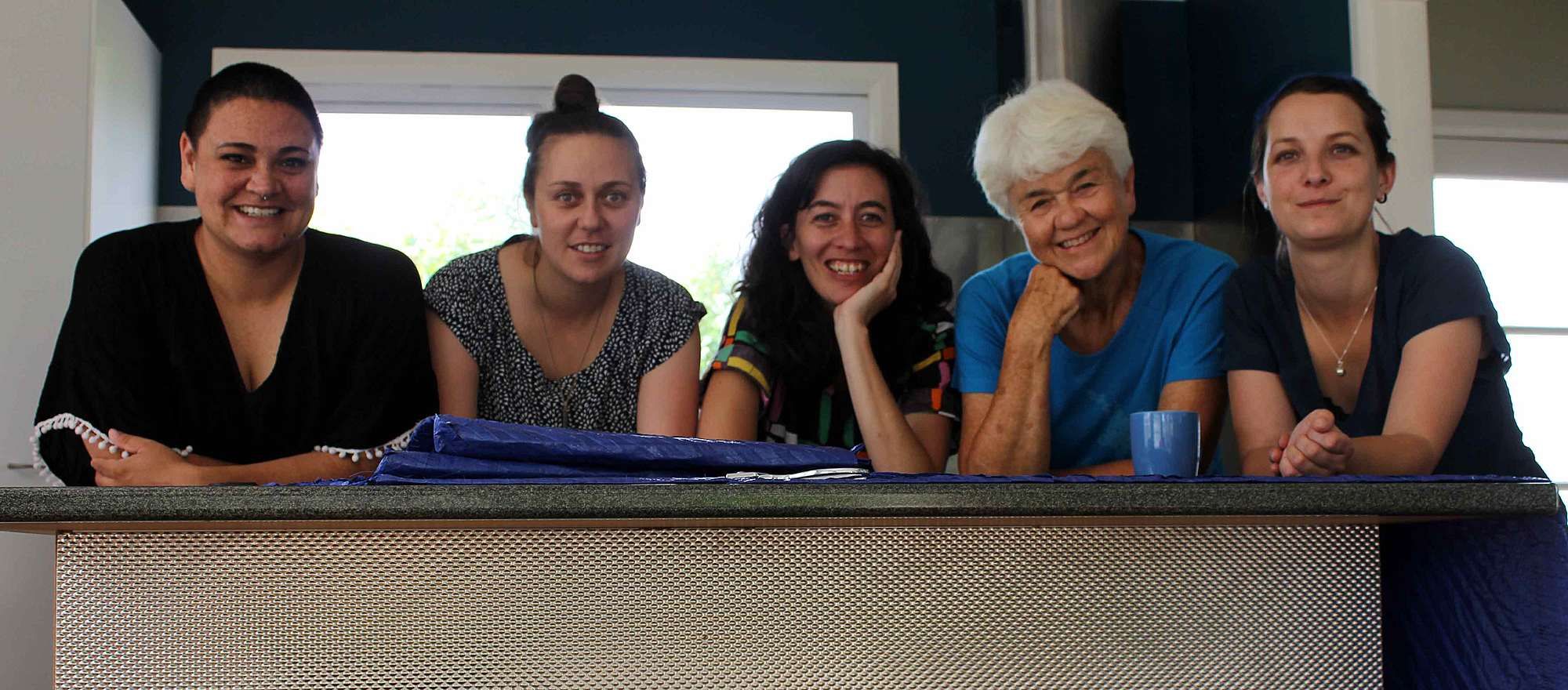An Art Matriarch: Why Maureen Lander is a Boss
Mata Aho reflect on tuakana and mentor Maureen Lander in light of her latest exhibition Flat-Pack Whakapapa.
Mata Aho reflect on tuakana and mentor Maureen Lander in light of her latest exhibition Flat-Pack Whakapapa.
When we were asked to write about Maureen Lander’s new exhibition Flat-Pack Whakapapa at The Dowse Art Museum, we saw it as an opportunity to outline, as best we can, why Maureen Lander is a boss. Late last year we were invited to develop a new work for documenta 14 in Kassel. During the process we were able to draw on the support, gentle questioning and art world experience of our tuakana and mentor Maureen Lander, which has been invaluable on this journey, not only as artists, but as friends, mothers, academics, teachers, curators and as humans in general.
We have found that, within our teaching roles and working within gallery spaces, that it’s hard to find published literature around the work of artists that we want to share with our students and communities. Taiāwhio I & II published by Te Papa Press on contemporary Māori Art for example are now ten years old. It was publications such as these that entered our college art rooms and showed us that Māori Art was not only a living evolving thing but also something that we could become a part of. Artists like Maureen Lander are doing the mahi and have thirty plus years of experience in the field. It’s vital that this work is comprehensively documented so that other generations can follow and build on this work.
Maureen is the first Māori to gain a doctorate in Fine Arts from a New Zealand University. As Māori women, we have experienced the institutional challenges, life responsibilities and economic hurdles that make completing any study, no mean feat. The four of us have all walked across a stage in a black gown to receive our degrees, masters and a PhD for which we’re immensely humbled, honoured and proud. In some instances, we were the first in our family but in all instances we won’t be the last. Academia is not for everyone but for all its faults it has enabled us with skills to seek knowledge, employment and friendship. Maureen’s long academic career is only one facet of a wider pursuit of knowledge attributed to her continuous seeking, questioning and development of practice. As artists, we’re familiar with navigating new territories but there is an invaluable sense of assurance in knowing someone who has not only made headway in this area but has also left the door open.
*We first collectively met Maureen at the 2014 Māori Art Market, when we were all standing around a sealskin cloak, discussing how warm they must be. During the opening night we talked with Maureen about the embroidery table we would be setting up the next day and that she was welcome to come and join us. She did. We even ate our sandwiches outside on the waterfront together. As a collective of introverts, Maureen seemed to know and understand our groove.
A few months before this, Terri and Sarah had spent time with both Maureen and artist Toi Te Rito Maihi in a tent at Kōkiri Pūtahi, a wananga which hosted 150 artists at a marae in Kaikohe. Large marquees were set up as temporary workshops for the artists to work in over the two-week period. On arrival Terri and Sarah settled in at a table in the mixed media section between carvers and painters. Every now and again laughter erupted from another little white tent – about 3m x 4m on the marae atea. The laughter filled the space and even managed to drown out the power tools of the carvers. The tent glowed in the sun during the day and even more so in the evenings when lights were switched on. Drawn to it like moths, Terri and Sarah discovered that the little white tent was actually a haven – art making with raucous and risqué jokes – a contemporary wharepora. Terri and Sarah stayed in the tent for the next two weeks alongside artists Bethany Matai Edmunds, Keren Ruki, Toi Te Rito Maihi and Maureen Lander. During this time, Maureen coined the term “a whimsy of weavers”, as a collective noun. A note in Sarah’s journal next to that classification states “We are the boundary riders.”
Terri and Sarah discovered that the little white tent was actually a haven – art making with raucous and risqué jokes – a contemporary wharepora.
So the next year, when we asked Maureen to be our mentor through the Creative New Zealand Tohunga Tukunga Mentoring Programme, we didn’t know her very well. But what we did know was that we found her work inspiring and that the small time we had spent with her was full of big discussions and quiet art making. With a loose plan to travel to the Hokianga and experiment with materials, we emailed Maureen to ask if she might be interested in having us for a week long wānanga at her place. It seems really simple, but her reply of “yes” solidified our confidence in taking a chance to ask to spend time with people we admire. From there we all decided that this time in the Hokianga would be to focus on playing with materials without the pressure of an outcome. As a boss mentor, Maureen reminded us of this when we were considering using this time to produce work for an exhibition.
In February, we invited Maureen to spend time with us at our Palmerston North HQ to share with her the development of Kiko Moana being made for documenta 14. We bombarded her with questions about exhibiting internationally, the use of non-customary materials and installation in general. She was generous with her knowledge and had plenty of questions for us in return. As artists, we’ve all had those prickly critique sessions about a developing work. Our experience with Maureen is that her line of questioning is never to deliver knowledge on a topic but to enable us to continually reflect on our methods and processes. Her questioning about aspects we had not considered, came from a place of care and wanting us to show our best work.
“You don’t have to fill a space, to fill a space” was one such gem Maureen dropped that day. She also reminded us that as installation artists the entire space is the canvas and to consider that when installing alongside other artwork.
You don’t have to fill a space, to fill a space.
We’re still trying to figure out exactly how Maureen manages to deliver such sharp and critical lines of enquiry that nevertheless come across as encouraging and open. There’s strength and care in this ngāwari approach. Artwork is hard work but we want our practices to be enjoyable and sustainable like Maureen’s. This means we need to navigate the art world in a way that suits us. It also means knowing why we make art and who we make it for. It means nurturing relationships that are reciprocal and safe while fostering an environment of robust critique.
*Maureens’ calendar is pretty full and she always seems to be finishing a project and starting another with a few more on the back burner. She had only just finished Sculpture on the Gulf prior to her Palmerston North visit. She created a participatory project called Flax Flags, encouraging people to engage with the medium of flax, in collaboration with Piritahi Marae on Waiheke and the Hokianga Pa Te Aroha Marae Weavers, who have been weaving together for 25 years.
Maureen applied for and received Creative Communities Funding to deliver this project. As one of the few non-commercial artworks in the exhibition, the funding went towards accommodating and feeding the rotating group of weavers who in groups of four, took three hour shifts on the ‘trail’. Hearing this we were saddened but not surprised that external funding sought to deliver a project would only just cover basics like food and accommodation. It was also like seeing into the future and with a sigh we realised that we too, if fortunate enough to be practicing artists in our 70s will still be filling out funding applications. No doubt this is indicative of the wider art world however we hope that in the near future it might not be such a radical idea for artists to receive a living wage for their work.
It was also like seeing into the future and with a sigh we realised that we too, if fortunate enough to be practicing artists in our 70s will still be filling out funding applications.
Regardless, Maureen and the Pa Te Aroha artists exhibited work that portrayed a deft understanding of material with the ability to be accessible to many. This collaborative project drew on the history of flags in Aotearoa, their representation of colonial dominion but also the swift adoption of flags by Māori as a symbol of resistance. Trail-goers were invited to mark their own harakeke flag and leave it in the temporary ‘gallery’ or collect one from the gallery to carry around the trail. The large nails used to scratch into the flax, had iconic red-painted tips and not one to miss a pun, Maureen Instagrammed a photo of her painted nails:
Crown Grab Bag (2006) is a work that we have drawn on in the classroom and lectures to demonstrate how layers of meaning are inherent within materials and highlighted through the context in which they’re presented. Crown Grab Bag is a crown woven from Pingao – native sedge grass utilised in customary weaving and tukutuku. Pingao once inhabited and stabilised all of the sand dunes along all of the coastal regions of Aotearoa but declined in the 1800s due to burn off by early settlers, grazing of livestock and the introduction of invasive Marram grass. In Crown Grab Bag the golden pingao crown is placed on a vibrant royal blue cushion and as such pulls together so many tensions we associate with as Māori between the Crown and the coastline. The Queen’s Chain, customary access to taonga and the events around the Foreshore and Seabed Act 2004 are all bound within this work with elegant clarity.
In 2015 Maureen exhibited alongside Christine Hellyar and Jo Torr at the National Library in an exhibition called Tell Tails. Maureen was developing this work when we saw her at the Māori Art Market in 2014, and explained to us that she was recreating the bluebonnet and sash worn by Hariata Rongo, Hongi Heke’s daughter, when she went into battle. As part of her research Maureen looked into manuscripts written by her own great great grandfather JJ. Fergusson. Maureen’s logical application of whakapapa results in grounded work that resists dwelling on historical amnesia but provides access to contemporary perceptions of our own histories.
Maureen’s logical application of whakapapa results in grounded work that resists dwelling on historical amnesia but provides access to contemporary perceptions of our own histories.
Throughout her career, Maureen often plays with Māori and English words resulting in witty titles. The multiplicity of meaning when Te Reo Māori and the English language are juxtaposed is a thread that runs throughout her recent exhibition at The Dowse Art Museum titled Flat-pack Whakapapa which includes works such as DIY DNA and Kitset Whanaungatanga. Not only are the titles fun to say but they are conceptually loaded, examining kinship through a ‘Mitre 10 Dream Home’ lens. Intriguing and humorous at first glance, the proximity of a quick fix home-renovation and identity concepts quickly become complicated and layered. Whakapapa is complex, the reality being that it binds us to people and place (regardless of whether we like it or not) whilst still malleable, mobile and responsive to the environment.
The title work Flat-pack Whakapapa includes the method of whiri to bind the different woven harakeke formations. On the wall are four connected pieces that represent the line of descent from Puhi Moana Ariki, these are in turn connected to layers stacked on a plinth, the top three layers being the living generations of Maureen’s family. This literal whakapapa, that is ‘to make layers’ aids Maureen’s acknowledgment of being a Ngā Puhi artist exhibiting in Te Ātiawa territory. These same formations, without the connecting whiri, can be seen in the large wall work Kitset Whanaungatanga. In this work Maureen enlisted the help of her ‘A-Team’ (A for Āwhina). The A-Team were given specific instructions which determined the size, technique and colours, but beyond this, the artists could push the boundaries as far as possible. The resulting wall work is a series of similar diversity, pulling in the viewer to the subtle difference in technique and colour. This exploration of whanaungatanga examines kinships beyond blood, and highlights the importance of the relationships developed through mutual interests and choice.
In a conversation with Maureen she stated that ‘Muka is my material’. This is more than apparent in her deft use of it within the work DIY DNA. The exhibition wall text states that;
“Building on the notion that our whakapapa is always with us, Lander’s installations can be packed down into individual weavings: easily carried around, reconfigured and added onto later.” These notions are interesting to think about in terms of the recent development of the gene editing technology, CRISPR, which can do all of those things, reconfigure, add on – and it’s accessible to all who can wield its microscopic scissors. CRISPR works differently from other methods of genetic manipulation in that it doesn’t swap genes between species but edits DNA by switching genes on and off. One of the possible benefits of CRISPR is that it could provide solutions to many debilitating genetic diseases.
The subject of gene manipulation is also touched on in Glorified Feathers, Maureen’s PhD research which centered around the attributes and roles of feathers in Māori society. A reference is made in the exhibition catalogue towards resurrecting the huia through cloning; “Using a huia cell and a donor magpie, seven step by step instructions for a ‘recipe’ on how to hatch a huia; www.nzbirds.com/Cloning.html.” This is followed by; “Call notes for a huia at risk of sounding like a magpie.” With an image of sheet music from an HT Carver of Whanganui[1]
The idea of a Huia at risk of sounding like a Magpie is humorous but also brings up poignant questions around the ethics and unknowns of tweaking genetic material. Some concerns raised about CRISPR is that while targeting one condition, it may inadvertently ‘switch off’ other aspects of our genetic material that might sit outside of the realm of ‘normal’ but that evolution has nevertheless held onto over time.
When viewed in this context DIY DNA could be seen as a reminder to proceed with caution and to question the process at every turn. The installation is malleable and easy to transport, quick to assemble, but as an allegory for whakapapa the skill and care woven into it stretches back to the beginning of time. Colonisation has taught us that much: to be wary and to retain control of processes that concern our whakapapa – past and future.
Colonisation has taught us that much: to be wary and to retain control of processes that concern our whakapapa – past and future.
Maureen’s inclusive intergenerational processes extend to her mokopuna. Maureen and her seven-year-old moko Krishna have an exhibition which just closed at the Corban Estate Arts Centre called, The Delicate Balance of Wobbling Stars. In an effort to create a show that appeals to children and big kids alike, their deep consultation periods happened during the school holidays. The pair worked and played with all measure of technical instruments to achieve a ‘delicate balance’. As with Flat-Pack Whakapapa, this work references research from the realm of science. ‘Doppler spectroscopy’ or ‘the wobble method’ explains a stars motion that can be seen amongst constellations.
Maureen is an inspiration. We aspire to be as conceptually rich, inclusive and aesthetically adventurous as her and we look forward to stepping into and creating our own wharepora spaces. The issues and materials might change and how we perceive and navigate those changes as Māori may also evolve, but regardless there will always be wānanga, raucous laughter and quite possibly in the tradition of the art matriarchs, plenty of dirty jokes.
[1] Lander, M. (2001). Glorified Scales. Auckland
Maureen Lander
The Dowse Art Museum
15 July 2017 to 05 November 2017
All images courtesy of the artist and The Dowse Art Museum.
This piece is presented as part of a partnership with The Dowse Art Museum, which covers the costs of paying our writers while we retain all editorial control.

